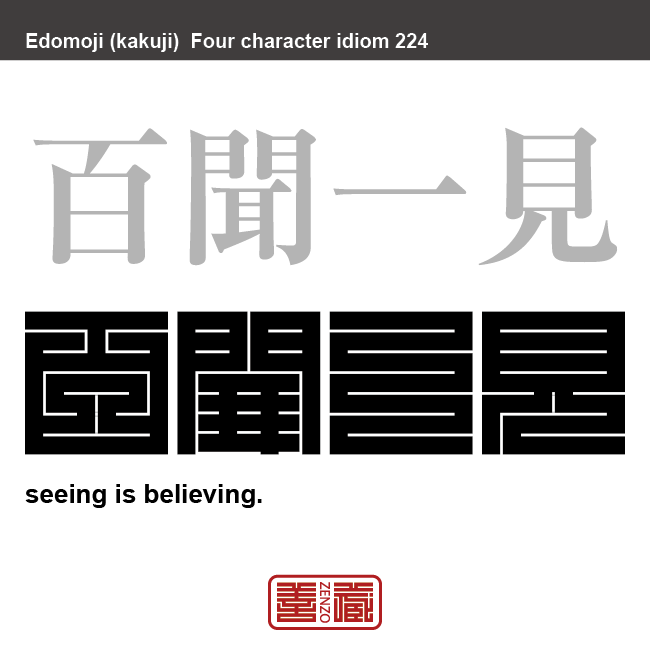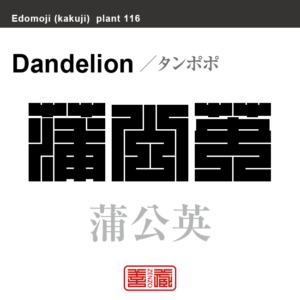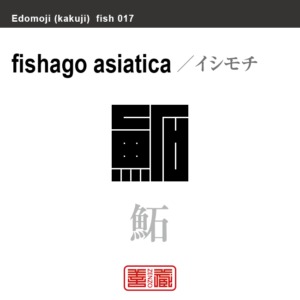百聞一見 ひゃくぶんいっけん 角字でことわざ、四字熟語

百聞一見
ひゃくぶんいっけん
Hakubun-Ikken
Seeing is believing.
Unicode: [百_0x767E][聞_0x805E][一_0x4E00][見_0x898B]
百聞(ひゃくぶん)は一見に如(し)かず。
人の話を何回も聞くよりも、実際に自分の目で確かめるほうが大事という意味。
「漢書」趙充国伝が出展
宣帝が使者をつかわして尋ねた。
「将軍は、羌の異民族の勢力がどれほどであると思うか。また反乱を鎮圧するには、どれほどの兵力が必要であろうか」
趙充国は答えた。
「百聞は一見に如かず。現地を遠く離れてははかりがたいものです。私が自ら現地へおもむき方策を立てましょう」
角字とは?
江戸時代に誕生した角字は、正方形のグリッド内にほぼ水平・垂直のラインのみで文字(漢字)が表現されるグラフィックアートです。
正方形という限られた空間の中に、あらゆる文字を閉じ込めようとするグラフィックデザインは、前述した、ミニマムな物に対する日本人特有のこだわりが随所に感じられます。
そのシンプルで有りながら、奥深い「角字」は多くの日本人を魅了し、お祭りで着る半被や印半纏(しるしばんてん)と言われる着物や、商標、印鑑、家紋、看板デザインなどに今日まで数多く使用されてきました。
What is Kakuji?
There is a style of penmanship called “Kakuji” in Japan. Edo-born Kakuji is a graphicart that expresses letters (kanji) with almost horizontal and vertical lines only.
The design which bases on many straight lines seems simple, or too plain even at its first glance; yet this beautiful artistic penmanship that encompasses the aesthetic of the Japanese in the Edo era, also known as “Iki”, and playfulness has long been inherited to this day, thanks to the masteries’ long years of efforts in training and refinement.
Kakuji with its simplicity and depth is used for designs such as trademark, hanko stamp, family crest and signboard.































































 2文字コード:MZ 3文字コード:MOZ 数字:508 ITU:258 ccTLD:.mz
2文字コード:MZ 3文字コード:MOZ 数字:508 ITU:258 ccTLD:.mz







































































































































